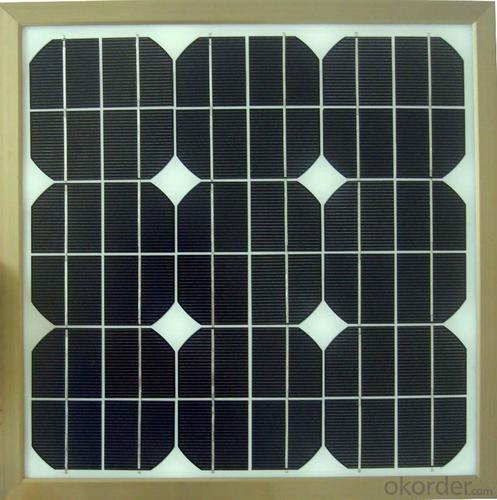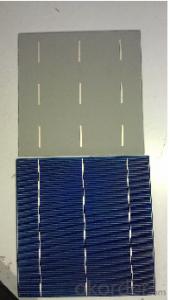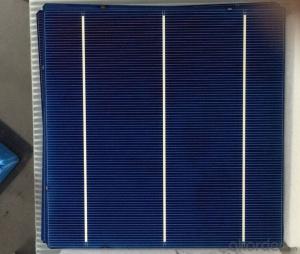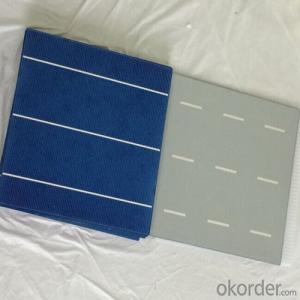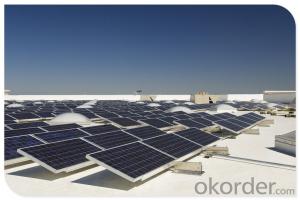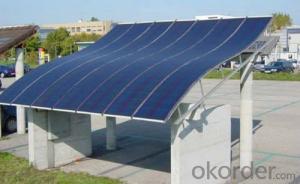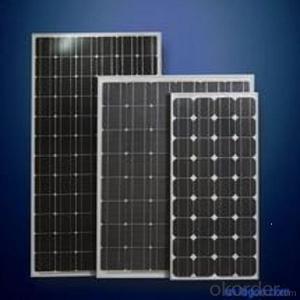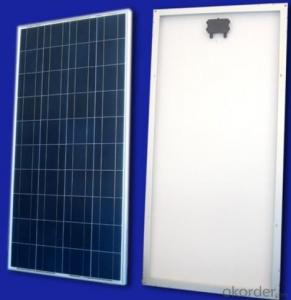Specifications
1. monocrystalline silicon solar panel
2. high efficiency
3. 25 year module output warranty
Warranty:
1) 5 years for material & workmanship;
2) 12 years for 90% power output;
3) 25 years for 80% power output.
Packaging & Delivery
MOQ: 50pcs
Delivery Time: 10-20 days after order confirmation
Package: Wooden carton or pallet packing
| Model | NBJ-025M |
| Max Power (W) | 25w |
| Optimum Power Voltage | 18.40V |
| Optimum Operating Current | 1.36A |
| Open Circuit Voltage | 22.53V |
| Short Circuit Current | 1.45A |
| Size | 645*290*25mm |
| Weight | 3.0KG |
| Cell quantity | 36 pcs |
Solar cells and their teachnoleadges
The history of solar cell development is briefly outlined, and the properties of the sun and solar radiation are reviewed. Properties of semiconductor materials that are important in the design and operation of solar cells are reviewed. The physical mechanisms involved in the generation and recombination of excess carriers are discussed and the basic equations of device physics are given. Both the dark and illuminated properties of p-n junctions are analyzed. Energy conversion efficiency limits are discussed for the photovoltaic process as well as the effects of various nonidealities on efficiency. Techniques for measuring the efficiency of photovoltaic devices are also described. The standard technology for making silicon solar cells is reviewed, and improved silicon cell technology is discussed. Considerations relevant to the detailed design of silicon cells are discussed. Several alternative device concepts are outlined and the structure and properties of solar cells made on some of the more developed alternatives to single-crystal silicon are discussed. Concentrating systems and photovoltaic systems components and applications are described. The design of stand-alone, residential, and centralized photovoltaic power systems are discussed.
Solar cells and their applications
Multiple solar cells in an integrated group, all oriented in one plane, constitute a solar photovoltaic panel or solar photovoltaic module. Photovoltaic modules often have a sheet of glass on the sun-facing side, allowing light to pass while protecting the semiconductor wafers. Solar cells are usually connected in series and parallel circuits or series in modules, creating an additive voltage. Connecting cells in parallel yields a higher current; however, problems such as shadow effects can shut down the weaker (less illuminated) parallel string (a number of series connected cells) causing substantial power loss and possible damage because of the reverse bias applied to the shadowed cells by their illuminated partners. Strings of series cells are usually handled independently and not connected in parallel, though as of 2014)individual power boxes are often supplied for each module, and are connected in parallel. Although modules can be interconnected to create an array with the desired peak DC voltage and loading current capacity, using independent MPPTs (maximum power point trackers) is preferable. Otherwise, shunt diodes can reduce shadowing power loss in arrays with series/parallel connected cells.

